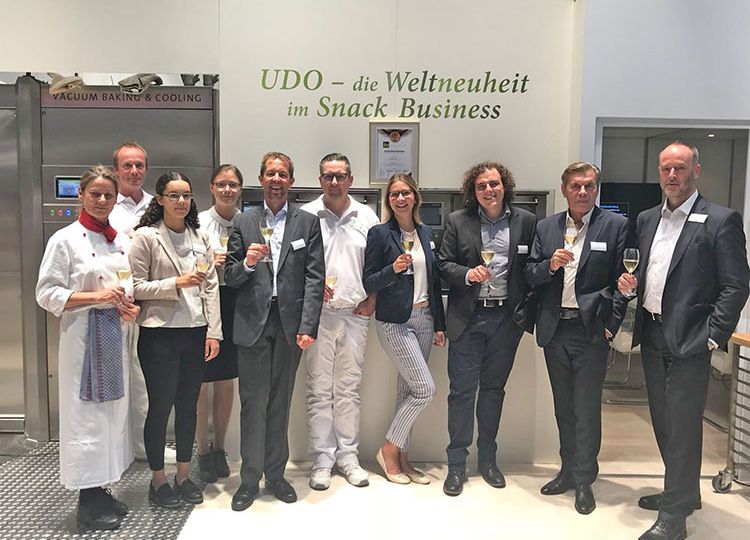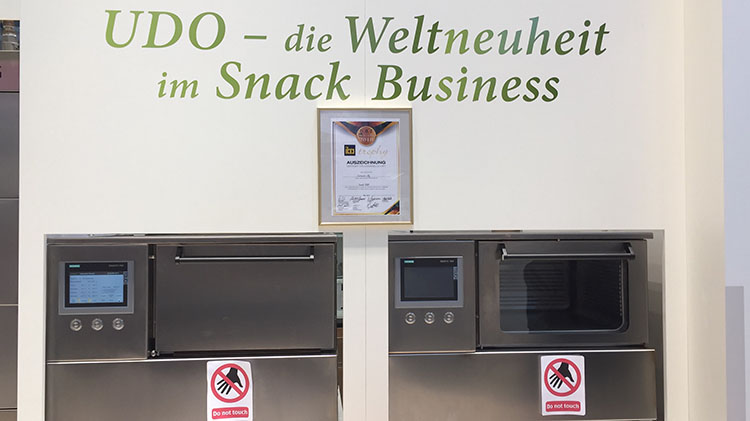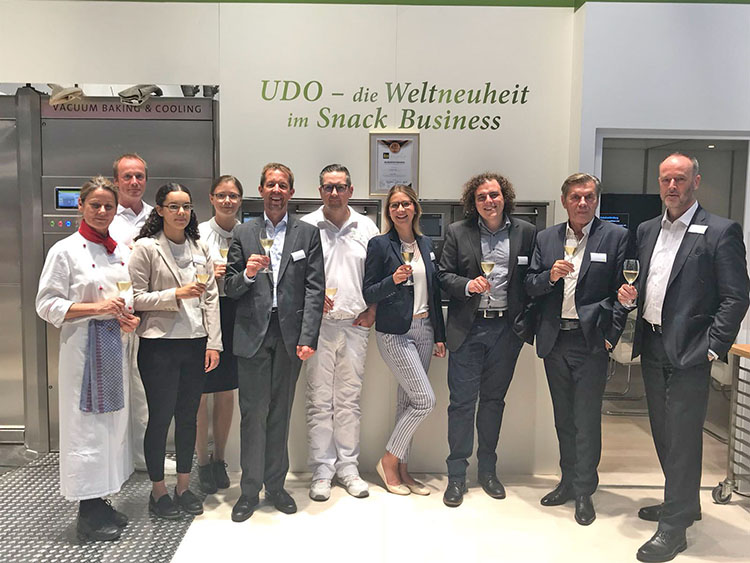
The equipment was so small that the description “inconspicuous” really isn’t an insult. Nonetheless, the “UDO” made by Cetravac AG in Switzerland was awarded a trophy at the iba trade fair, and attracted a large amount of attention. We asked its inventor, Adolf Cermak, what really lies behind it.

bbi: A small equipment built into a wall – precisely what have you actually presented to the world that has caused such a stir?
Cermak: Don’t jump to conclusions about its importance from its size. What we mainly wanted to do by exhibiting the Snack Oven in Munich was to demonstrate that of course the principle also functions on different scales, and may even revolutionize instore baking.
bbi: Then please start by just explaining that principle to us …
Cermak: I will explain it to you by using a frozen par-baked pizza as an example. First of all, the frozen product is put into the oven, which has previously been brought to operating temperature (approx. 160°C), and a vacuum is created in about 15 – 20 seconds. This sucks the air out of all the product’s pores and clears the way for the steam which then flows in. The steam heats the crumb and crust stepwise to at least 80 – 85°C. Since heat transfer from the steam to the crumb/crust structure takes place with otherwise unattainably high efficiency, the duration of this process lasts only a few seconds and, in contrast to the use of microwaves, is associated with an improvement in crumb quality and an increase in crumb moisture. The as yet un-gelatinised starch gelatinises, which heightens the impression of freshness. At the same time as the steaming, infrared radiation elements heat the product’s coating/surface with a wavelength specifically matched to the process. At the end of the baking process, a short (approx. 15 – 20 seconds) vacuum cooling phase is started (in the oven, which is still hot), and the ready-to-eat product can be removed at a palatable temperature.
bbi: So how long does the entire process now take, from loading the pizza into the oven until it is removed, and what are the specific benefits compared to other processes?
Cermak: It takes about 60 to 90 seconds. The time it takes to prepare a coffee is sufficient to optimally bake a pizza and cool it down again. The process is considerably faster when compared to a circulating air oven, and in contrast to the microwaves that are often used, there is no adverse effect on the dough structure. Also, there are none of the “side-effects” caused by unequal heat uptake in a microwave, which can result in the consumer biting into an extremely hot piece of tomato that was covered up by a distinctly cooler slice of cheese.

Udo – the global novelty in the snack business
bbi: But the oven is small nonetheless. Not much more than a pizza would fit into it. Will there also be bigger ovens in the future?
Cermak: This Snack UDO is only a forerunner for a whole series of vacuum baking ovens that Cetravac will launch onto the market in the near future. The spectrum ranges from a domestic appliance to instore ovens in all the usual sizes. The instore ovens will differ from the Snack series in that they will operate with circulating air, thus also enabling conventional baking followed by a vacuum cooling phase. However, the main application in a bakery branch is aimed at the ultrafast baking-off of pre-baked special and large breads in only four to eight minutes, even for breads weighing 750 – 1,000 grams that were stored at “ambient” temperature or frozen. This will enable artisan bakers to recapture the bread business. One advantage of our method is that there is no weight loss in spite of the cooling phase that is included in the entire process.

The Cetravac crew after the award of the iba trophy
bbi: In the planned instore oven, is there also a function for vacuum, steam and infrared, or just circulating air baking as in the past, and faster cooling down by vacuum – or to put it another way: can I also bake bread rolls and croissants quicker in it?
Cermak: It’s similar – the infrared elements are replaced by circulating air, but the whole of the baking process continues to be “vacuum-assisted”, i.e. there again the absence of air in the pores is used to accelerate the baking process and to bring about gelatinisation/re-gelatinisation of the starch, thus leading to considerably longer shelf life and freshness retention. There can always be a vacuum cooling phase at the end, whatever is being baked, and that’s a unique selling point which represents an absolute guarantee of success for the Internet trade, where it’s a question of being able to dispatch freshly baked bread as quickly as possible. And of course, the benefits of increasing and stabilising volume can also be fully utilised in that situation, at all times and for every product.
bbi: So what was the feedback at the iba trade fair?
Cermak: Very positive and very wide, as far as the spectrum of potential customers was concerned. Of course, many bakery specialists from all over the world were there, as well as people from the trade and food service, who were interested in this oven because it allows such a fast response to consumers’ wishes. But equipment supplier also showed great interest, including those from the USA, because it opens up a completely new worldwide market.
bbi: So what will you do now?
Cermak: We have an absolutely unique world market position with this equipment design concept. In the coming weeks and months, together with a small but very potent group of future users from the two key areas, snacks and baked products, we will define a series of machines corresponding to the needs in the years to come, and these machines will be on the market in 2019.
bbi: Thank you for the interview, Mr. Cermak.


